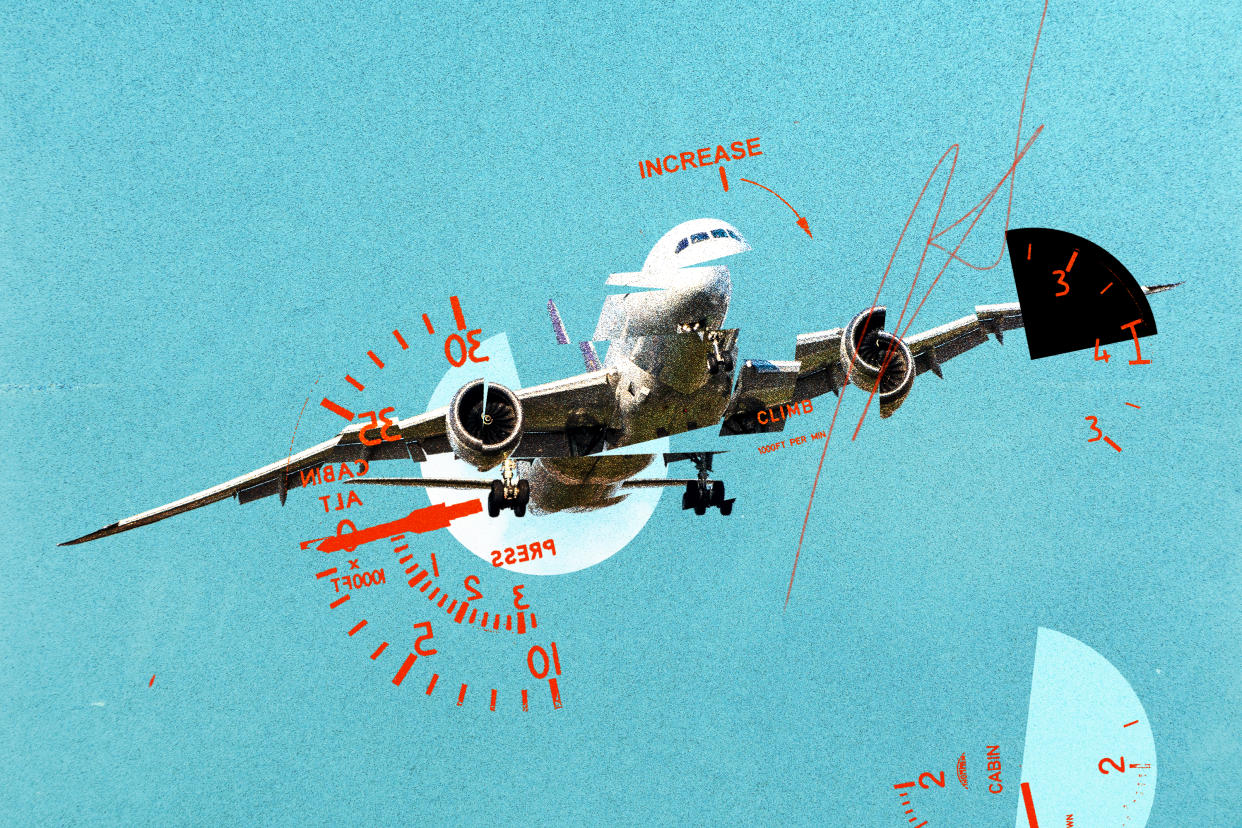11 people went to the hospital after a bumpy Delta flight. What is a 'severe turbulence' injury?

Eleven people on a Delta Air Lines flight were taken to the hospital Tuesday after their Atlanta-bound plane hit turbulence.
Flight 175, which departed from Milan, was about 40 miles northeast of Hartsfield-Jackson Atlanta International Airport when it hit severe turbulence, Federal Aviation Administration officials told the Associated Press.
"Delta Care Team members are mobilizing to connect with customers," the airline said in a statement. "Our priority is taking care of our customers and crew who sustained injuries." There are no publicly available details about what injuries passengers sustained. The FAA plans to investigate the incident, according to the AP.
"We will fully cooperate with the investigation while we continue to take care of our customers and people," a Delta spokesperson told Yahoo Life.
The incident raises many questions about how you can get injured during turbulence, especially since a recent study from the University of Reading in the U.K. found that air turbulence — and severe air turbulence in particular — is on the rise, thanks to global warming. What do these injuries involve? Doctors explain.
How can you get injured during turbulence?
There are a few possibilities. "First, an unrestrained passenger may be thrown about by turbulence, leading to falls or head injuries," Dr. Ashley Panas, chief flight physician at Vanderbilt LifeFlight, tells Yahoo Life. "Second, unrestrained objects may strike passengers."
A range of injuries can happen. "Injuries can be minor to severe, and while very uncommon, they can be fatal," Dr. Lewis Nelson, professor at the Rutgers New Jersey Medical School, tells Yahoo Life. "Concerning injuries occur when people are tossed around by unexpected, severe and rapid plane movements."
The plane can suddenly jerk when moderate to severe turbulence hits, Dr. Erik Antonsen, associate professor at Baylor College of Medicine, tells Yahoo Life. "If passengers are standing in the aisle, they can lose their balance and fall, sometimes onto other passengers," he says. "Those in seats can experience whiplash-type injuries and can hit their heads against the window or seat backs. Flail injuries of the extremities can occur as arms and legs can get slammed against whatever hard surfaces are nearby."
The most troubling injuries happen when people are thrown upward during turbulence, Nelson says. "Objects such as food carts, computers or luggage can also be set in motion and can cause injury, including burns from coffee," he says.
What do turbulence injuries usually involve?
It's a lot of head injuries, Dr. Russ Kino, emergency medicine physician at Providence Saint John's Health Center in Santa Monica, Calif., tells Yahoo Life.
"The most common thing I've seen is mostly head lacerations," he says. "When people don't have their seatbelts on, their heads hit the plastic above them during turbulence. That plastic often breaks and there are a lot of lacerations. There's a lot of picking pieces of plastic from the scalp."
Kino says he once treated passengers who hit rough turbulence while flying from Bali to Australia. "We had 100 people come to the ER, and they all had lacerations and pieces of plastic in the scalp."
But passengers can also have blunt injuries to the torso or the arms and legs that lead to bone fractures, joint sprains, bleeding or internal organ injury, Nelson says. "The most concerning injuries occur when people are thrown upward relative to the plane during turbulence," he says. "Hitting the ceiling headfirst can lead to head injury or to an axial loading injury in which the spine is compressed and injured."
If someone is severely injured during a flight, the pilot may be required to divert and land at a closer airport to get quick medical attention, Panas says.
How to avoid getting hurt on a flight
Kino stresses the importance of wearing your seatbelt — and not just when the crew announces there is turbulence ahead. "Every moment you can, you should just wear your seatbelt," he says.
Dr. Christopher E. San Miguel, associate professor at the Ohio State University Wexner Medical Center, agrees. "People are almost exclusively injured in turbulence events by falling or being thrown around the cabin," he tells Yahoo Life. "It can occur without warning, which is why it’s important to remain buckled, even when the light is not illuminated."
Antonsen also recommends limiting how often you're out of your seat. "Don't be up and moving about the cabin more than is necessary, and don't stand in the aisles for long periods," he says. "Many people fly frequently and some may tune out crew announcements, but the crew is your most important source of information that can help you avoid injury on flights. Be sure to listen when they are talking."
Despite all of this, San Miguel stresses that turbulence injuries are relatively rare. "It is important to point out that the odds of being injured by turbulence on a commercial flight is quite low," he says.


